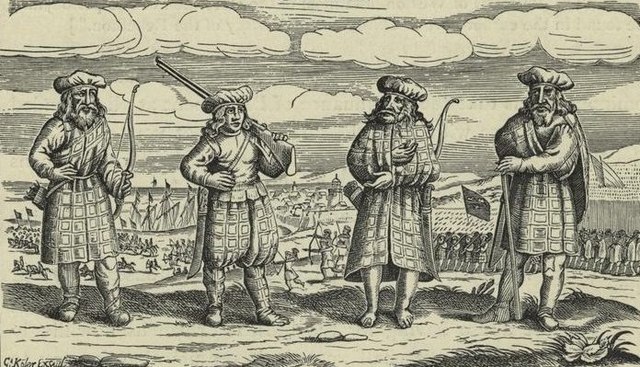Clan Mackay is an ancient and once-powerful Highland Scottish clan from the far North of the Scottish Highlands, but with roots in the old Kingdom of Moray.
A Victorian era romantic illustration of a MacKay clansman by R. R. McIan.
A 17thC German print assumed to show men of Mackay's Regiment in Stettin during the Thirty Years' War. The original caption states, "They are a strong and hardy people who survive on little food. If they have no bread, they eat roots [turnips may be intended]. When necessary, they can cover more than 20 German miles in a day's forced march. [1 German mile = 4¾ English miles] Besides muskets, they carry bows, quivers and long swords."
In 2004 six "Mackay Country" signs were installed welcoming people to the area that was once the territory of the clan. They were placed at Kylesku, Achfary (both in parish of Eddrachillis), Forsinard, Dalvina, Crask (all three in parish of Farr) and one on the A836 road at the border between the counties of Caithness and Sutherland. In 2014 the latter was vandalized.
Tongue Bay, Sutherland, c.1822, with the House of Tongue in the background which was formerly the seat of the chiefs of the Clan Mackay after they abandoned Castle Varrich and Borve Castle in the 16th century
Tongue is a coastal village in northwest Highland, Scotland, in the western part of the former county of Sutherland. It lies on the east shore above the base of the Kyle of Tongue and north of the mountains Ben Hope and Ben Loyal on the A836. To the north lies the area of Braetongue.
Tongue, Highland, Scotland





